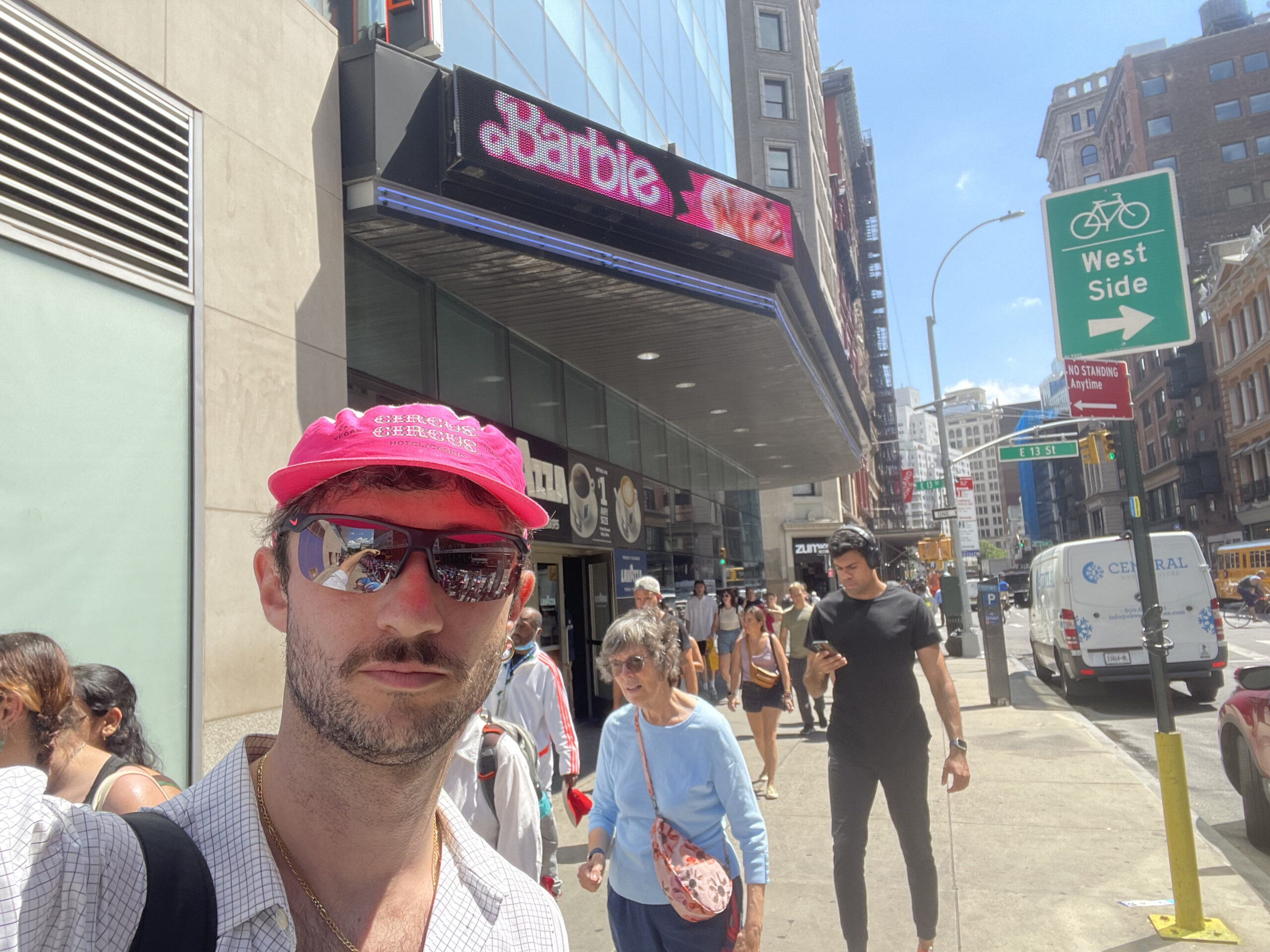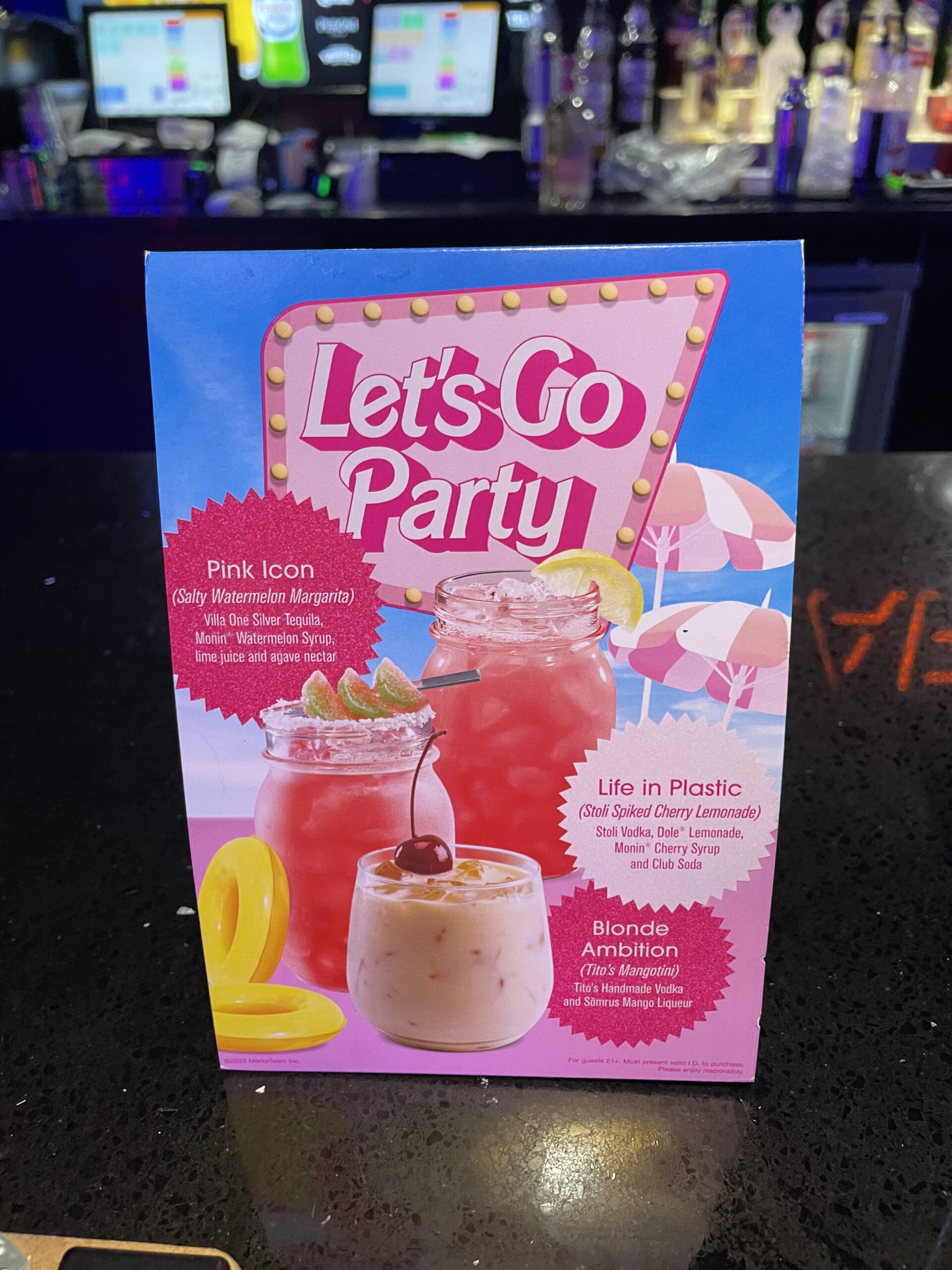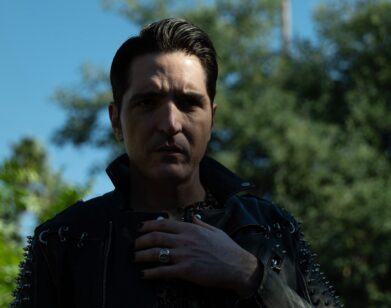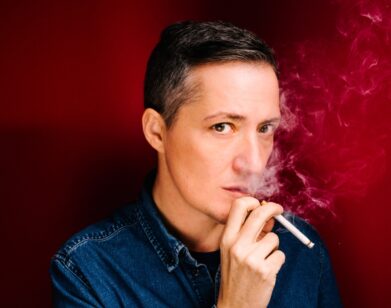BOX OFFICE
Steven Phillips-Horst Reports from the Front Lines of Barbenheimer
Barbie and Oppenheimer came out on the same weekend. The excitement generated over this scheduling coincidence might’ve convinced you it was the first time two movies with different vibes—let’s say, a fun one and a serious one—had ever come out simultaneously. It is not. There was, for example, Mamma Mia and The Dark Knight in 2008. There’s Something About Mary and The Mask of Zorro in 1998. Indecent Proposal and The Sandlot in 1993. None of these double-headers became event viewing, maybe because they didn’t have Barbie’s nuclear, $150 million marketing effort, which in turn buoyed the Twitter-driven memetics of “Barbenheimer.” Or maybe their unwieldy, compound word branding was less piercing. “Indecent Lot” doesn’t sound like an unavoidable juggernaut. Neither does “Mamma Knight,” although “There’s Something about Zorro” would’ve been a good headline when Zorro beat Mary at the box office. “Barbenheimer” is more than sum of its parts: the matronly, German roundness of “Barben” attached to the terrifying, weapon-like “heimer,” evokes, well, a hammer coming down on our attention spans—the monoculture as cudgel.
Movies are dying, we hear, yet despite the writers’ strike, the self-defeating financials of the streaming model, and a pervasive creative bankruptcy that favors superheroes and sequels, Hollywood hoisted itself up by its pink bootstraps and broke box office records without any capes or numbers at the end of its title. Maybe it’s the originality. When Interview asked me to see both films on the same day, I endeavored to test another theory, that our collective enthusiasm for these two mid-century borne American fables is tinged with nostalgia, for an era when the Empire was on the up and up. Are we reenacting some boomer-inherited trauma as we creep into the darkened theater to investigate our Americanness and wear pink to see the doll movie in the shadow of the atom bomb movie?
“I am become Death, destroyer of worlds,” is the Bhagavad Gita quote Oppenheimer himself so self-consciously offered as he looks on, in pride and horror, at his creation. Oppenheimer was a destroyer of worlds, but also of flesh. In Hiroshima, skin melted off bodies. The allied victory gave way to the decadence of post-war America, with its manicured lawns and dishwashers, and what better symbol of its sunny promises than Barbie? Pure consumerist fantasy, plasticine suburban joy. We had to destroy flesh—the real kind—in order to make it anew, this time in plastic. Faker, shinier, happier, pointier. Fantasy, you see, is impossible without the destruction of reality. To test my theory, I will have to see Oppenheimer first.
A trailer implored me to “see it on the biggest screen possible,” though the film is mostly comprised of close-ups of people in conversation. On Fandango, I count at least seven projection options for Oppenheimer on opening day in New York: “70mm,” “50mm,” “Large Format” (which feels like a redundant description of what a movie theater is), “IMAX,” “IMAX 70 mm,” “Regal Premium Experience” (which refers to the seats reclining slightly), and the always humiliating “Standard.” Barbie has no such delineations, because only Oppenehimer is a sacred totem of male pretension that demands worship via technical codex. I opt for “Large Format” because I don’t know what “70mm” means and I’m terrified of disappointment.
At 2 PM on Friday, Regal Union Square is teeming with people. I seem to recall this theater threatening to shut down, but then, so have a range of businesses in the post-pandemic sympathy sweepstakes, only to gin up tearful eulogies that may lead to an infusion of VC funding. I am here to see Oppenhimer, but Barbie is already pushing her weight around. Pink fabric invades the hallways like a dust storm in Los Alamos, girls in pink tank tops, boys in pink polos, girls in pink leggings, some Barbie-branded. I consider that “the color pink” is a pretty easy costume prompt. I, too, am wearing a pink hat, with a graph-paper shirt, to embody the spirits of each film, the girl (pink) and the physicist (graph paper).
The teenage employees are not used to this many customers. A gay concession worker is arguing with someone, who I then realize is a gay I know, also here to see Oppenheimer. The concession gay is in a pink sequin top (I can only assume all employees were encouraged to wear pink but only the gay men obliged), and claiming the stand he is working at is closed, despite the apparent workingness of the popcorn machine spewing kernels and the other customers receiving their tubs of soda.
The “large format” theater is, as expected, regularly sized, filled with mostly under-30-year-olds. One guy holding a small dog and wearing Uggs turns out to be a crazy person, who talks to himself loudly as the movie begins, striking fear into the hearts of cinephiles here to behold Christopher Nolan’s opus in quiet reverence. A few minutes later, he screams “I’m not supposed to be in Oppenheimer!” and loudly exits. The rest of us nod in ascension.
Oppenheimer favors montages, heavy strings, cubist art and lots of cathedrals of higher learning, all of which signal “genius.” Nolan’s or Oppenheimer’s? It is a smart movie for dumb people, and that is a compliment. It is not easy to make so much history and science legible, and the scene, the one big scene for which we needed the biggest screen possible, had my entire body stricken, my heart pounding, my blood vessels in large format. This was a boy movie, and my boyness was riveted. I did laugh, however, at the image of Albert Einstein in a sweatshirt, and at every scene with Emily Blunt’s character, who follows most filmic tropes of Suffering Wife of a Man Who Does History: she is always pregnant or drunk and only those things, constantly pouring nips of alcohol not surreptitiously into coffee mugs but into existing martini glasses already full of alcohol, often at a party or bar where everyone is drinking and it would be just as socially acceptable to simply drink more of the drink you are already holding. The movie ended to some light applause. As the throngs of people filed out, two girls remained, fast asleep, their heads nestled in one another’s shoulders like two perfect half-spheres of plutonium. Hopefully they will wake up in time for Barbie.
I chatted with the friend of my friend who argued with the pink concessionist, who reveals she saw Barbie the previous night and almost wore pink but felt stupid and disrobed. What began as self-actualized revelry—making the bright lie of cinema a momentary physical, bodily truth through costume— became an exercise in mass delusion. She didn’t want to be another brainwashed consumer, man. And which movie got her vote? “I preferred this,” she said, referring to Oppenheinmer.
With a few hours to kill before the main event, I decide to consider the moral quandaries of the Manhattan Project at the fast-casual bowlerie “Dig.” As I enjoy my charred salmon, a girl one table over, whose pink-bowed hair suggests she’s just seen Barbie, starts in with the spoilers: “I liked when they were in Barbieland, but the real world part didn’t work as well.” My theory in action. “That’s because the terror of nuclear war destroyed our conception of the real,” I wanted to say.
As day turns to night, the city morphs into Pink Halloween. A trio films TikTok choreo outside the theater while another girl squad arrives in “Happy Danni Jo’s 25th Birthday” t-shirts. A 25th birthday is not usually a custom merch-level event, but the slumber party appeal of Barbie has clearly proven too irresistible for Danni Jo and her acolytes. I am witnessing the real-time bachelorettification of a supposed paean to feminism which, in retrospect, will make a lot of sense.
I order the Barbie-branded “Pink Icon” (a margarita), and the bartender informs me he has to leave to get more Sour Patch Kids for my cocktail. For months, the Barbie marketing department unleashed its own Manhattan Project on the world, blanketing cities in mushroom clouds of pink, from park benches to Zara purses to Chevy Blazers. The marketing tactics were not as ubiquitous as the discussions about them: can you believe how thorough they are, the devil works hard but Mattel works harder, etc. Universal, the studio behind Oppenheimer, skipped all the bomb-themed activations, because boys don’t have to try so hard, do they? Girls have to put their face on, boys just roll out of bed.
As I wait for the Sour Patch restock, a guy behind me in salmon-hued shorts has an idea. “They should do an Oppenheimer drink,” he chuckles. “A scotch neat and a cigarette.” Everyone is in on the joke. We have been marketed to and it has worked and that is fun because we want to belong. We all dressed in pink because our secular, technologic society lacks ritual. Alienated from community, siloed in our phones, we crave ceremony.
The mood in my theater of unspecified screen format is jovial. The crowd skews younger than Oppenheimer, although I see one dad in a pink polo with his daughter in a pink dress, which is cute. There is a trailer for a Hunger Games prequel, then one for the Willy Wonka prequel, then a superhero movie. I consider that despite the praise for not being a sequel, Barbie is still based on the world’s most famous toy, still a retread of existing intellectual property. Then again, Oppenheimer isn’t exactly original (based on a book, based on a person), and neither was the original Barbie doll (based on a German doll, based on the concept of a woman). Maybe all ideas are leftovers. Shakespeare “cannibalized existing IP” when he did a bio-play of Henry V, we just didn’t say so.
The film begins and Greta Gerwig’s girlboss fantasia washes over the audience like a Dua Lipa track at SoulCycle. We are powerless to resist. Every joke lands. Dua Lipa herself appears in the first five minutes as a mermaid amidst the delirious, cotton candy production design, in case you weren’t sure if you should scream “yas queen!” Most of the writing is a sort of clichéd, self-conscious Twitter-speak—“everyone’s staring at me, yet there’s an undercurrent of violence?” Barbie wonders aloud as she skates through the “real world” of Santa Monica, where all of the men are lecherous. The audience howls. “That’s right!” the woman next to me shouts when Barbie’s grandmother-ghost figure states that “life’s uncomfortable and then you die.” “Yes ma’am!” she cries again when America Ferrera’s character launches into a diatribe that forms the film’s thesis, listing society’s impossible expectations of women like, “be a boss, but don’t be mean” and “be healthy, but not too thin,” and a host of other straightforward guardrails that honestly seem like good advice for anyone.
Barbie seems to love being a girl, or at least being high femme. But her path to feminist realization still leaves her in a full beat and heels. Barbie is a trans allegory in some ways—all gender, no sex. All performance, no biology. The film gets some mileage with jokes about her and Ken lacking genitalia but seems confused about where the male gaze should rest. Here is where Barbie’s fantasy can’t exist without destroying reality first. A performance needs an audience, just like a sleepover needs hairbrush microphones and other weapons of the patriarchy. Gerwig hasn’t figured out how to reconcile the two. It is not just Barbieland that is ersatz, but the feminism therein, where being “president” or being a “doctor” simply means smiling and looking cute in a dress. But, post-Oppenheimer, my cynicism can’t stop me from lapping it up. Life in plastic is pretty fun.
In Oppenheimer, Nolan sands down the title character’s edges—he is a womanizer, but the women only come to him; he is arrogant, but only to others who are also pompous—so the audience can focus on the Big Moral Question. On Wikipedia, I learned the real Oppenheimer collected works of impressionists, a detail that might’ve been interesting to include—a man with earthly desires and classist pretensions, not the monastic figure the movie treats him as. He was also more shrewd about his public persona, an architect of his own mythology; he came up with that Bhagavad Gita quote, after all. Barbie never had such control over her image. Had she been interviewed by Life in 1956, perhaps she, too, could’ve uttered something prophetic, intimating that she was aware of the Pandora’s box of her brilliance, trapping girls in an endless pursuit of clear skinned, pointy-breasted perfection. “I am become Blonde, Destroyer of self-esteem.”
After Barbie, the ad-hoc focus groups forming in the lobby were resoundingly positive: “That was so funny!” Ryan Gosling “stole the whole movie… he ate that!” Besides the irony of claiming a man won the film, the patriarchy didn’t seem too oppressive. On the subway, an old gay guy approached a group of girls awash in pink: “Did you see the movie?! Ooo I’m jealous! I’m Skipper!” he cried, dating himself. I saw Barbies and Kens, dolling themselves up, Kens in Sambas talking about fake IDs, contoured Barbies preening and posing. Everyone trying to impress each other. It was fun, but not much seemed at stake. Maybe we were in Barbieland.









